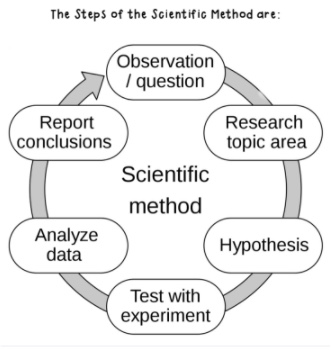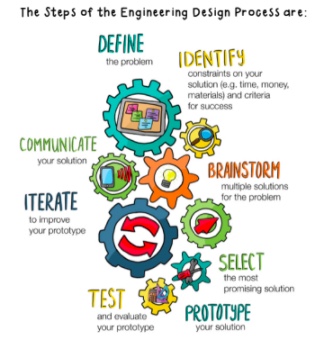STEM Fair Update October 2021 – What Should You Be Working on This Month?
STEM Fair November 19, 2021
Prize Raffle!
All STEM Fair participants will be entered into a drawing for various prizes!
Thank you to our sponsor PEAK ENT!
What should you be working on this month?
- You should have your topic chosen.
- You should be researching your topic.
- You should be designing your experiment/brainstorming your prototype. Make sure you are taking notes in your lab book!!
- You should fill out the permissions form if you need to! Forms are in the office.
- (No human test subjects, microbes, animal test subjects, harmful or dangerous materials.)
What’s Next…
- Complete your experiment/design
- Create your Journal and Display Board
- Register for the Wasatch STEM Fair (registration information available Nov.1)
STEM Fair Requirements
All participants must have the following:
- Lab Book—The lab book can be any kind of note-taking material. The purpose of the lab book is to keep track of all your notes, data, and information as you are working on your project. It does not need to have any details specifically but should show evidence of you working on your project over time.
- Journal—The Journal is your final written presentation of your project. It should be neat, organized, and detailed. The journal can be hand-written or typed. You can include more pictures in the journal than may fit on the display board.
- Tri-Fold Board Display—The Display board is designed to show an overview of your project for the judges. You should have your project title clearly displayed and then each part of the Scientific Method or Engineering Design process represented. You should include pictures, diagrams, and graphs.
ALL PROJECTS MUST FOLLOW EITHER THE SCIENTIFIC METHOD OR THE ENGINEERING DESIGN PROCESS:
SCIENTIFIC METHOD—The Scientific Method is used when answering a question and performing an experiment to find an answer to the question.
The Steps of the Scientific Method are:

- Observation/question
- Research topic area
- Hypothesis
- Test with experiment
- Analyze data
- Report conclusions
ENGINEERING DESIGN PROCESS—The Engineering Design Process is used to solve a problem by designing and testing a prototype to solve the problem.
The Steps of the Engineering Design Process are:

- Define the problem
- Identify constraints on your conclusion (e.g.—time, money materials) and criteria for success
- Brainstorm multiple solutions for the problem
- Select the most promising solution
- Prototype your solution
- Test and evaluate your prototype
- Iterate to improve your prototype
- Communicate your solution
STEM Note October FLYER.pdf
Actualización de la Feria STEM de octubre de 2021 – ¿En qué deberías trabajar este mes?
Feria STEM 19 de noviembre de 2021
¡Sorteo de premios!
¡Todos los participantes de la Feria STEM entrarán en un sorteo de varios premios!
¡Gracias a nuestro patrocinador PEAK ENT!
¿En qué deberías trabajar este mes?
- Deberías tener tu tema elegido.
- Deberías estar investigando tu tema.
- Deberías estar diseñando tu experimento/conversión de tu prototipo. Asegúrate de tomar notas en tu cuaderno de laboratorio.
- Deberías rellenar el formulario de permisos si lo necesitas. Los formularios están en la oficina.
- (No hay sujetos de prueba humanos, microbios, sujetos de prueba animales, materiales dañinos o peligrosos).
Lo que sigue…
- Completa tu experimento/diseño
- Crea tu Diario y Tablero de Exhibición
- Inscríbete en la Feria STEM de Wasatch (información de inscripción disponible el 1 de noviembre)
Requisitos de la Feria STEM
Todos los participantes deben tener lo siguiente:
- Cuaderno de laboratorio—El cuaderno de laboratorio puede ser cualquier tipo de material para tomar notas. El propósito del cuaderno de laboratorio es mantener un registro de todas tus notas, datos e información mientras trabajas en tu proyecto. No es necesario que contenga detalles específicos, sino que debe mostrar evidencia de tu trabajo en el proyecto a lo largo del tiempo.
- Diario—el diario es la presentación escrita final de tu proyecto. Debe ser limpio, organizado y detallado. El diario puede estar escrito a mano o a máquina. Puedes incluir en el diario más fotos de las que caben en el tablero de exposición.
- Tablero tríptico—El tablero está diseñado para mostrar una visión general de su proyecto a los jueces. Debe mostrar claramente el título de su proyecto y, a continuación, cada parte del proceso del Método Científico o del Diseño de Ingeniería. Deberá incluir imágenes, diagramas y gráficos.
TODOS LOS PROYECTOS DEBEN SEGUIR EL MÉTODO CIENTÍFICO O EL PROCESO DE DISEÑO DE INGENIERÍA:
MÉTODO CIENTÍFICO—El Método Científico se utiliza cuando se responde a una pregunta y se realiza un experimento para encontrar una respuesta a la pregunta.
Los pasos del método científico son
- Observación/pregunta
- Tema de investigación
- Hipótesis
- Comprobar con un experimento
- Analizar los datos
- Informar de las conclusiones
PROCESO DE DISEÑO DE INGENIERÍA—El Proceso de Diseño de Ingeniería se utiliza para resolver un problema diseñando y probando un prototipo para resolver el problema.
Los pasos del proceso de diseño de ingeniería son
- Definir el problema
- Identificar las limitaciones de su conclusión (por ejemplo, tiempo, dinero, materiales) y los criterios de éxito
- Realizar una lluvia de ideas de múltiples soluciones para el problema
- Seleccionar la solución más prometedora
- Crear un prototipo de la solución
- Pruebe y evalúe su prototipo
- Mejora el prototipo mediante la iteración
- Comunicar la solución
April 14th, 2024


